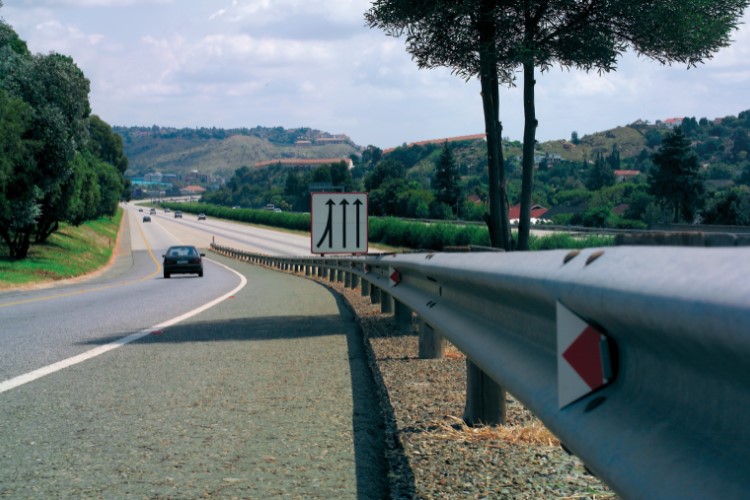The guardrail, or highway crash barrier, as it is sometimes referred to, is a safety barrier. Its main purpose is to shield motorists from hazards next to the road and to prevent straying vehicles from colliding with these hazards or entering dangerous areas. In the best-case scenario, the guardrail helps a straying vehicle to come to a safe stop without serious damage to the vehicle. However, a steep slope or embankment might be directly next to the road and this may make it impossible to install a guardrail. Or, the road might be tree-lined or is on a retaining wall. In such instances, the W-beam guardrail might not be suitable, as it needs some clearance behind it to be effective. Under these circumstances, concrete barriers or wire-rope rails may be better. These are also types of guardrails, each with its own unique properties.
The concrete barrier is less forgiving than the W-beam or wire-rope rail but it is extremely effective in preventing a vehicle from breaking through. The wire-rope rail has an excellent deflection capacity and disburses the impact energy, substantially reducing its effects on the passengers. It takes up little road-surface space and can be installed where space is limited. However, if the embankment or hazard is right next to the road surface, this type of barrier is not necessarily the best solution because the vehicle can partly displace the wire rope and, if a cliff is right next to the road, the vehicle could still go over it.
This shows how important it is to select the most appropriate guardrail for the road in question, the vehicle speed, and hazards from which to shield the motorist. The clearance behind the barrier is equally important in determining whether a barrier can be installed. With the W-beam guardrail, the soil in which the posts go also plays a role in the effectiveness and sturdiness of the barrier. If it is not possible to remove a hazard and the clearance between the road and the hazard is insufficient for a straying vehicle to come to a controlled stop or return to the road without going into the hazard, a guardrail is the best option. However, even in such an instance, the engineers have to calculate whether the impact with the hazard or a barrier installed in front of the hazard would be most likely to cause severe injury or mortal danger. Only if the impact with the barrier would be less hazardous should it be installed.
Once the decision has been made to install the barrier, the type of guardrail must be chosen. Factors such as the average vehicle height and speed of travel, the severity of the hazard, the clearance behind the barrier, maintenance needs, visibility, and the danger that the barrier itself poses are taken into consideration. The characteristics of each type of barrier are considered, such as their deflective ability, capacity to stop a vehicle, energy disbursement, impact on the vehicle and occupants, durability, visibility, cost of installation, and more.
Factors such as whether there is a kerb in front of the barrier and how it affects the posts that must deform to absorb the impact must also be considered. The barrier’s maintenance requirements are important, as any work done on or next to a road poses an additional, temporary risk for road users. In addition, the road-maintenance crew is at risk of being injured during the maintenance work. Once the type of barrier is selected, the preferred supplier must be considered. To this end, it is best to buy from a trusted supplier, known for manufacturing and supplying a wide range of road-safety products.
Working with a credible local guardrail supplier holds several benefits:
- The supplier provides products relevant to the South African road conditions.
- Products are made to meet SANS and relevant standards.
- The supplier can provide related road-safety products such as deflectors.
- Replacement parts can be ordered and delivered in a short time.
- The supplier can provide installation guidance and product-selection assistance.
- With other road-safety products available from the supplier, road-construction safety equipment can also be obtained for maintenance work.
View our full range of guardrail products and get in touch to discuss your road-barrier needs.

